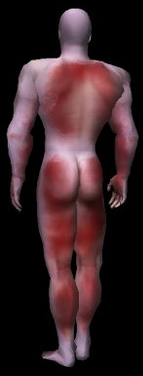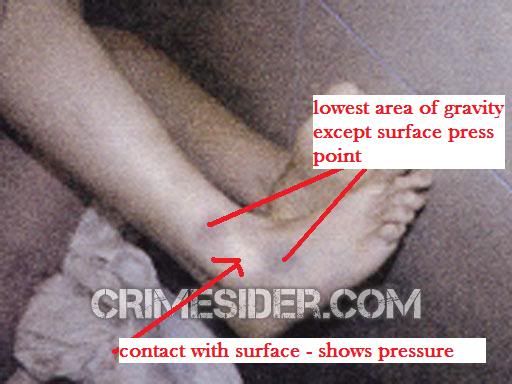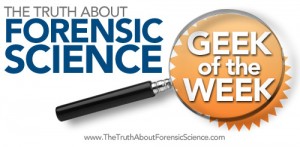The Forensic Science Geek of the Week
Please visit the www.TheTruthAboutForensicScience.com FaceBook fan page.
The week 47 “www.TheTruthAboutForensicScience.com Forensic Science Geek of the Week” honors goes to: Ron Moore, Esquire

- Ron Moore, Esquire-Forensic Science Geek of the Week
According to his website:
Ronald L. Moore received a Bachelors degree in Biology from UC Riverside and was a Senior Forensic Scientist at the Orange County Crime Lab, where he worked for over 18 years. During his time at the lab, Mr. Moore supervised the Forensic Alcohol Unit, as well as working in Toxicology, Blood and Breath Alcohol, Drug Analysis, Firearms and Toolmarks, and Crime Scene Investigation. He was Board Certified in Forensic Science by the American Board of Criminalistics. Mr. Moore is an experienced expert witness, with hundreds of appearances in DUI trials and DMV Administrative Hearings, as well as homicides and other major crime cases. Forensic Expert Ronald L. Moore is also a factory trained technician on the Intoximeters Alco-Sensor IV breath testing instrument used in Orange County. He is also certified in the performance of Standardized Field Sobriety Tests, and in the science behind these tests.
Mr. Moore attended Western State University College of Law, graduating Valedictorian,magna cum laude, with a Certificate in Criminal Law from the Criminal Law Practice Center, senior managing editor of the Law Review, and three term president of the Criminal Law Association. Criminal Defense Attorney Ronald L. Moore is licensed to practice in all California State Courts and is admitted to practice before the United States Supreme Court. Attorney Moore is a frequent speaker at local and national professional meetings on many aspects of alcohol testing, metabolism, and impairment, as well as driving under the influence of drugs. Ronald L. Moore represents clients in Orange County, California, primarily in cases of Driving under the Influence of Alcohol, Drugs or Prescription Medication, and testifies nationally as an expert in Driving under the Influence matters. Mr. Moore has written for the two volume treatise California Drink Driving Law, and is published in the Champion, the journal of the National Association of Criminal Defense Lawyers. He wrote a portion of the Appellants brief in the U.S. Supreme Court case of Treadway v. California, 129 S.Ct. 1039 (2009) and a portion of the Amicus Curiae brief in Bullcoming v. New Mexico (U.S. Supreme Court No. 09-10876).
Professional Memberships and Affiliations:
- State Bar of California
- United States Supreme Court Bar
- National College for DUI Defense
- National Association of Criminal Defense Lawyers
- California DUI Lawyers Association
- Orange County
Congratulations to our Forensic Science Geek of the Week winner!
See the challenge question that our winner correctly answered.
OFFICIAL QUESTION:

- Forensic Science Geek of the Week Challenge
This is a 3D Computer Assisted Design (CAD) image.
1. What does it show?
2. What its significance in crime scene investigation?
3. Are their limitations and assumptions of what this shows?
Our Geek of the Week answered:
This appears to show livor mortis, the settling and pooling of the blood after cardiac activity ceases. In crime scene investigation, it is used to determine if the body has been moved after death, and is one of the factors used to determine the time interval since death. A photo or simulation cannot show whether it is fixed, and would be difficult to show the complexity of the actual patterns. This one doesn’t show the blanching at pressure points / resting places where the blood could not pool due to compression of the tissues. It also doesn’t show the position of the body when found, which may or may not be consistent with the pattern of livor mortis, which may suggest the body was moved after death.
[BLOGGER’S NOTE: Here is our Honorable Mention: Just to amplify an otherwise acceptable answer….

The onset of livor mortis (aka lividity) is environment dependent. The major factor that determines its onset is temperature and to a degree humidity. It is characterized as postmortem hypostasis purple coloration in dependent (compressed) areas of the body due to lack of blood circulation. It is caused by accumulation of blood in vessels in dependent areas due to gravity. At a point it becomes fixed due to hemolysis (red blood cell burstis) and collapse of the blood cells themselves. It has also been shown to occur pre-death in torture situations where death is slow or prolonged. In very noticable circumstances petechiae hemorrhage (purple spots on skin) can occur when capillaries and smaller blood vessels collapse or burst. To the uninitiated, its appearance may be misinterpreted as bruising. However, it is thought to be distinguished from bruising as applying pressure to bruise does not cause blanching (loss of color) while unfixed livor mortis does. During an autopsy, an incision into a bruise shows diffuse hemorrhage into tissue, but livor mortis is confined to vessels.

Shown above is fixed livor mortis with petechiae hemorrhages. Also in this picture we can see how dependent areas resting against a firm surface will be pale due to compression of blood vessels.]
The Hall of Fame for the www.TheTruthAboutForensicScience.com Forensic Science Geek of the Week:
Week 1: Chuck Ramsay, Esquire
Week 2: Rick McIndoe, PhD
Week 3: Christine Funk, Esquire
Week 4: Stephen Daniels
Week 5: Stephen Daniels
Week 6: Richard Middlebrook, Esquire
Week 7: Christine Funk, Esquire
Week 8: Ron Moore, B.S., J.D.
Week 9: Ron Moore, B.S., J.D.
Week 10: Kelly Case, Esquire and Michael Dye, Esquire
Week 11: Brian Manchester, Esquire
Week 12: Ron Moore, B.S., J.D.
Week 13: Ron Moore, B.S., J.D.
Week 14: Josh Lee, Esquire
Week 15: Joshua Dale, Esquire and Steven W. Hernandez, Esquire
Week 16: Christine Funk, Esquire
Week 17: Joshua Dale, Esquire
Week 18: Glen Neeley, Esquire
Week 19: Amanda Bynum, Esquire
Week 20: Josh Lee, Esquire
Week 21: Glen Neeley, Esquire
Week 22: Stephen Daniels
Week 23: Ron Moore, B.S., J.D.
Week 24: Bobby Spinks
Week 25: Jon Woolsey, Esquire
Week 26: Mehul B. Anjaria
Week 27: Richard Middlebrook, Esquire
Week 28: Ron Moore, Esquire
Week 29: Ron Moore, Esquire
Week 30: C. Jeffrey Sifers, Esquire
Week 31: Ron Moore, Esquire
Week 32: Mehul B. Anjaria
Week 33: Andy Johnston
Week 34: Ralph R. Ristenbatt, III
Week 35: Brian Manchester, Esquire
Week 36: Ron Moore, Esquire
WEEK 37: UNCLAIMED, IT COULD BE YOU!
Week 38: Pam King, Esquire
Week 39: Josh Lee, Esquire
Week 40: Robert Lantz, Ph.D.
WEEK 41: UNCLAIMED, IT COULD BE YOU!
Week 42: Steven W. Hernandez, Esquire
Week 43: Ron Moore, Esquire
Week 44: Mehul B. Anjaria
Week 45: Mehul B. Anjaria
Week 46: Ron Moore, Esquire
Week 47: Ron Moore, Esquire




בידיפיי says:
I’m still learning from you, but I’m improving myself. I absolutely love reading all that is posted on your blog.Keep the tips coming. I liked it!